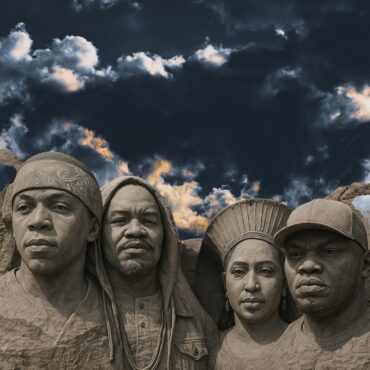On April 17, 2025, Kenyan artist Charisma, known offstage as Fidel, shared a heartfelt moment that resonated deeply with his fans and the creative community at large. In a tweet that quickly gained traction, Charisma posted a screenshot of a message from his mother, whom he has saved as “Mum Safcom.” The message read: “My son Fidel, I really wanted to be there as history is made—your first international performance but due to work commitments I wasn’t able to. May the Lord go ahead of you as you travel to Dubai then proceed to Australia. This is just but the beginning. Safe travels son. Youwill always be in my prayers. Mob love .” Accompanying the screenshot, Charisma wrote, “Aaaah The love of a mother wallahi,” a sentiment that captured the emotional weight of the moment.
This milestone—Charisma’s first international tour—marks a significant turning point not just for the artist but also for the perception of the arts in Kenya. For Charisma, the journey to this moment has been one of perseverance and defiance against a backdrop of systemic challenges that have long plagued Kenyan creatives. His mother’s initial reluctance to support his music career, as he shared in an earlier post, stemmed from a desire for him to focus on a law degree—a more “stable” path in her eyes. Her eventual acceptance and pride in his achievements reflect a broader shift in how the older generation is beginning to view the arts, a sector that has historically been dismissed as mere talent rather than a viable economic contributor.

The Struggles of Kenyan Creatives: A Legacy of Poor Policies
Charisma’s story is not unique among Kenyan artists. For decades, the Kenyan creative industry has struggled to gain recognition as a legitimate economic sector, overshadowed by more traditional industries like agriculture and tourism. During President Daniel Arap Moi’s regime, strict censorship policies stifled artistic freedom, particularly for genres like Benga, which were suppressed to curb ethnic nationalism. Artists were often pressured to produce pro-government or religious content, leaving little room for innovation or cultural expression. This historical context has contributed to a lingering perception among older generations that the arts are not a sustainable career path.
Moreover, Kenya’s outdated Copyright Act of 2001 has failed to keep pace with technological advancements, leaving artists vulnerable to exploitation and unable to fully monetize their work. The royalty collection and distribution system is notoriously inefficient, as noted by Kenyan artist and policy consultant Selina Onyando, who has pointed out that the system simply “does not work” in the digital age. As a result, local airwaves remain dominated by foreign genres like Afrobeats, Bongo Flava, and Reggae, while Kenyan artists struggle to compete and sustain themselves financially.
This lack of structural support has perpetuated a narrative that the arts are a hobby, not a profession—a belief that has led many parents, like Charisma’s mother, to steer their children toward more conventional careers. For creatives, this often means battling familial expectations while navigating an industry that offers little institutional backing. The arts have been reduced to a display of talent rather than recognized as an economic sector with the potential to contribute to other industries, such as tourism, education, and technology.

Screenshot courtesy of Charisma
A Turning Point for Charisma and Kenyan Music
Despite these challenges, Captain Charisma’s rise signals a potential turning point. His mother’s message, filled with pride and encouragement, mirrors a growing acceptance among the older generation that the arts can indeed be a pathway to success. Charisma’s journey from pursuing a law degree to embarking on an international tour to Dubai and Australia is a testament to the resilience of Kenyan artists who are determined to carve out a space for themselves on the global stage.
Adding to the significance of this moment, just a day after Charisma shared his mother’s message, his hit Sina Noma surged to 10 million views on YouTube, a year after its release—an impressive feat that underscores his growing influence and the power of digital platforms in amplifying Kenyan talent. This milestone not only validates Charisma’s decision to pursue music but also highlights the potential for Kenyan artists to break through the barriers imposed by a struggling industry. The success of his song, paired with his international tour, is a beacon of hope for other creatives who dream of similar achievements.
The Economic Potential of the Arts: A Missed Opportunity
The arts have long been undervalued in Kenya, yet their potential to drive economic growth is undeniable. Globally, the creative sector has proven to be a significant contributor to GDP. For instance, in 2019, the arts and cultural sector in the U.S. added nearly a trillion dollars to the nation’s GDP, surpassing industries like construction and transportation. In Kenya, events like Blankets and Wine and Oktoberfest have attracted international attention, positioning the country as a destination for touring musicians and integrating it into the global music network. Partnerships with global players like Universal Music Group have also begun to promote Kenyan artists internationally, signaling a shift toward greater investment in the sector.
However, for Kenyan artists to fully realize this potential, systemic changes are needed. Modernizing copyright laws, improving royalty collection systems, and investing in creative education and infrastructure could transform the arts into a powerhouse industry that not only sustains artists but also contributes to other sectors. The success of artists like Charisma could serve as a catalyst for policymakers and industry leaders to take the creative sector more seriously, recognizing its ability to create jobs, boost tourism, and foster cultural pride.
Written by Otieno Arudo for Radio 254





